The Mirror, Vol. 15, No. 709
The Internet – specially the two Social Networks of Facebook (more here) and Twitter (more here) – brought hundreds of millions of people world-wide in new ways into special relations of – mostly public group – communication. Both networks have also thousand of active participants in Cambodia.
Recently, there was also a discussion started about the fact that many people in Cambodia use Romanized Khmer on these networks – “Urgent!!! We have to promote the usage of Khmer Unicode, or else the Khmer language will disappear and Romanized Khmer will replace our language in the cyberworld.”
Some random examples:
- Tov na bong? Som tov pong?
- mech miss me tech mes!
- mean reurng ey bong srey?
- monus tov leang chrern nas
- Eng jass jeang mun chhreun nas
- doch chea teur cheang mun
Not only the Khmer script is not used, but in the absence of an established transliteration system different people spell the same word differently – like in chrern/chhreun and in jeang/cheang. That some English slips into Khmer sentences – miss me – is not a big problem, this is practiced in many countries, especially in informal, personal speech.
Interestingly enough: I have friends in China, Japan, Korea, and Thailand, who also use these Social Networks – I have never seen that anybody in China, Japan, Korea, or Thailand is using Romanized texts to write in their own languages; and their writing systems are all more complicated than Roman/Latin letters.
But there are also understandable reasons for the situation in Cambodia – understandable, but not justifying the disregard of the Khmer script. Cambodia is suffering in this respect until today, probably as a result of a tendency of “going it alone” and not seeking discussion towards cooperation even with opposing opinions.
In 1994, I had started the first Internet system in Cambodia – of course based on the generally available computers with English (and a few French) keyboards, and restricted to the use of e-mail only. But when we considered the use of the Khmer language for electronic communication, we found that there were eight different Khmer font families in use – all of them not mutually compatible. By the time a font conversion program had been developed, so that it became possible to read mails and other texts which had been written in one font system could also be read using this conversion program and a different font system – we had discovered 23 different Khmer font systems in actual use.
Even the introduction of the international UNICODE system – What is Unicode? Unicode provides a unique number for every character, no matter what the platform, no matter what the program, no matter what the language – met with reluctance from some Khmer font providers and their supporters, as it was not upholding their economic interests of providing a unified Khmer writing basis in the country and also from abroad.
But then, in 2001, the leadership of the country gave clear guidelines and pointed to a direction defined by public, not by private interests. Foremost is here the speech of Deputy Prime Minister Sok An at the closing of a three days conference on Information Technology Awareness on 13.9.2001, where he said:
“All laws, regulations and policies in the IT sector will reflect the following guiding spirit and philosophy:
- “to uphold the interests of the consumers and general public
- “to guarantee security of information, while facilitating the broadest possible access to public information
- “to respect individual rights, and
- “to avoid dependency on proprietary systems, instead promoting open systems and interoperability.”
Especially the latest point – “to avoid dependency on proprietary systems, instead promoting open systems and interoperability” – has been challenged and violated again and again, even from within institutions of the government – where people give preference to proprietary, commercial systems over available alternatives in the Open Source world: software legally free of any obligations to pay royalties or license fees to a foreign company.
It is estimated that close to 90% of the computers in use in the country use illegally copied and not licensed software. As a member of the World Trade Organization, Cambodia is under the obligation to enforce compliance with copyrights, at the latest by 2013 (please correct this, if my information is wrong). If all proprietary and commercial software in use would be registered and paid for, Cambodia would have to provide several tens of thousands of US Dollars per year.
But Open Source software is not only free from such legal obligations with heave financial burdens – Open Source software is also a widely used basis for local software developments, and this will also be of advantage to the growing number of Cambodian computer professionals.
This keyboard – its production in China for NiDA had been organized by KhmerOS – is an early proof of the good cooperation.
The NGO based Khmer Software Initiative – KhmerOS – was working on the guidelines given by Senior Minister Sok An and shared all results of their efforts to create UNICODE based Khmer Open Source software with the National Information Communication Technology Development Authority – NiDA (in Khmer here) – and cooperated with NiDA in promoting this software in the whole country. At a certain time, NiDA and KhmerOS had even assigned half of the province of Cambodia to NiDA and the other half to KhmerOS to organize and implement training events in all provinces.

Signing of Memorandum of Understanding by Senior Minister and Minister of Education Kol Pheng, and Executive Director of the Open Institute Chim Manavy, in the presence of the UNESCO Representative in Cambodia Jinnai Teruo
The Ministry of Education, Youth and Sports, in line with the government policy pronounced by Deputy Prime Minister Sok An, signed a Memorandum of Understanding in 2007 with the Open Institute, where the KhmerOS Initiative is housed, in order to use this OpenSource software package as the main and unified software for the whole educational system of Cambodia – for the Ministry of Eduction, for the Teachers Training Colleges, for the Provincial Offices of Education, and for the schools under the Ministry that have computers.
In the meantime, hundreds of companies, NGOs, government departments, many individuals, and the Ministry of Information, have used the training material developed by the Ministry of Education to join those who, following the guidance by the Deputy Prime Minister from 2001, have already been trained to join this common stream of applications which make it easy to communicate in the national language.
But, as I said before, there is also some irritation against following the direction given in 2001. There have been effort made to replace the “NiDA Standard Khmer UNICODE Keyboard” by a different one, claiming that such a change in a keyboard standard is the same as the change of software applications, were there is development from one version to the next. But the new keyboard is not “backward compatible” and requires more, and more complicated keystrokes than the original one.
But rumors and information that there are plans to create and promote programs against the intended unity in 2001 work also against a full fledged movement towards the acceptance of the UNICODE based KhmerOS system. It is difficult to understand and to accept that there is – unconfirmed – information that the next version of Microsoft Windows – Microsoft 8 – might use a Windows UNICODE System with a different keyboard layout, and some different input typing sequences from what is already widely in use Cambodia, disregarding what Cambodian government personalities and agencies have not only announced, but what is being practiced all over the country in the educational system and in many other places.
One can only hope the the economic interests of one big foreign company will not motivate it to use its economic power against the actual practice of the authorities of Cambodia. The Master Plan for Information and Communication Technology in Education, made public at the end of 2010 by the Minister of Education, Youth and Sport, base on several years of experience with the KhmerOS Open Source software, is clear, when it says:
“As advanced software in Khmer language – well adapted to Cambodian culture – is already available, and there are also training materials approved by the Ministry for this software, the Ministry will ensure that:
- “Only software that is 100% in Khmer language, and well adapted to Khmer culture and to the requirements of the Ministry, may be approved by the Ministry and used at schools and universities to teach ICT literacy.’
- “Only software for which textbooks approved by the Ministry are available can be taught. Textbooks must follow the existing curricula to ensure that students acquire professional competencies and not only technical skills.
- “The Ministry will have full ownership and copyright of all training materials and software that it develops in the context of this Master Plan. It will license all these materials under an appropriate sharing license that will allow others to use them, modify them, and distribute them, allowing improvement, personalization or development of better or different materials by third parties; this will help improve the materials that are finally used by teachers and students.’
…
“The advantages of Khmer language software apply also to the administration of the Ministry. The same rules used for procurement of end-user software for schools will be applied to Ministry offices making it easy for all MoEYS employees to use basic computer software. The Ministry will tend to use Open Source Software whenever possible for its own databases and back-office.
“The use of standards is the key to scaling the use of ICT. National and international standards will be used in the deployment of this Master Plan. These include the Unicode character encoding standard (ISO 10646). The NiDA Standard Unicode Keyboard V.1 defined by the National ICT Development Authority in 2005, or later standards, but only if they are fully compatible with the prior one. The Open Document international (ODF) standard (ISO 26300:2006) will be used for office documents.
…
“All software distributed must be able to do spell-checking in Khmer, order words according to Cambodian standard character order, and format numbers and dates in Cambodian traditional formats (in agreement with the formats that are taught in Mathematics classes in schools). The applications taught must be able to use correctly Unicode, as well as produce all formats considered standard by the Ministry (ODF, PDF). Only applications that have been legally procured will be taught in the education system, and manufacturers must show that their software cannot be easily attacked by viruses or malware. Software must run at a reasonable speed in low-power-consumption computers defined in this plan. When choosing among competing pieces of software that comply with these requirements, lowest standard retail price of software will be the most important decision factor for choosing the one that will be used in schools. Specifically for software, students will learn to recognize which software they can use freely and share (as in the case of Free and Open Source Software), and which software is proprietary, requires payment for the use of a license, and cannot be shared with others, sold to others, or transferred to another computer. Students will he discouraged from using proprietary applications in computers for which licenses have not been paid.
“Software will be licensed either through the GNU General Public License (GPL) or the GNU Lesser Public License (LGPL). Content will be licensed through a Creative Common Attribution License, allowing commercial use of the materials (to encourage private development of better materials, and competitive printing prices) and their modification, but requiring that the original work be attributed to the Ministry.”
With these decisions, Cambodia is in line with other countries making similarly progressive and economically wise decisions. One can only hope that private considerations, publicly linked or not linked to economic interests, will not prevail and not be successful, to derail this clear vision and the way laid out into the future of Cambodia as a member of the world wide information society.
Norbert KLEIN
Have a look at the last editorial – you can access it directly from the main page of the Mirror.
And please recommend The Mirror also to your colleagues and friends.
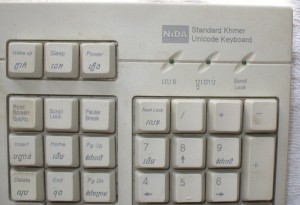
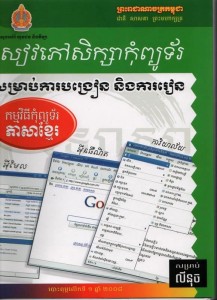
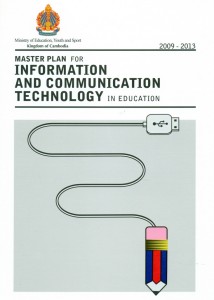
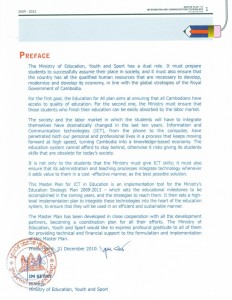
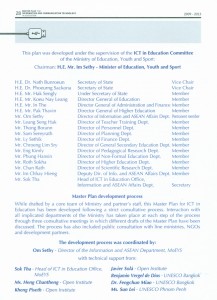

Recent Comments